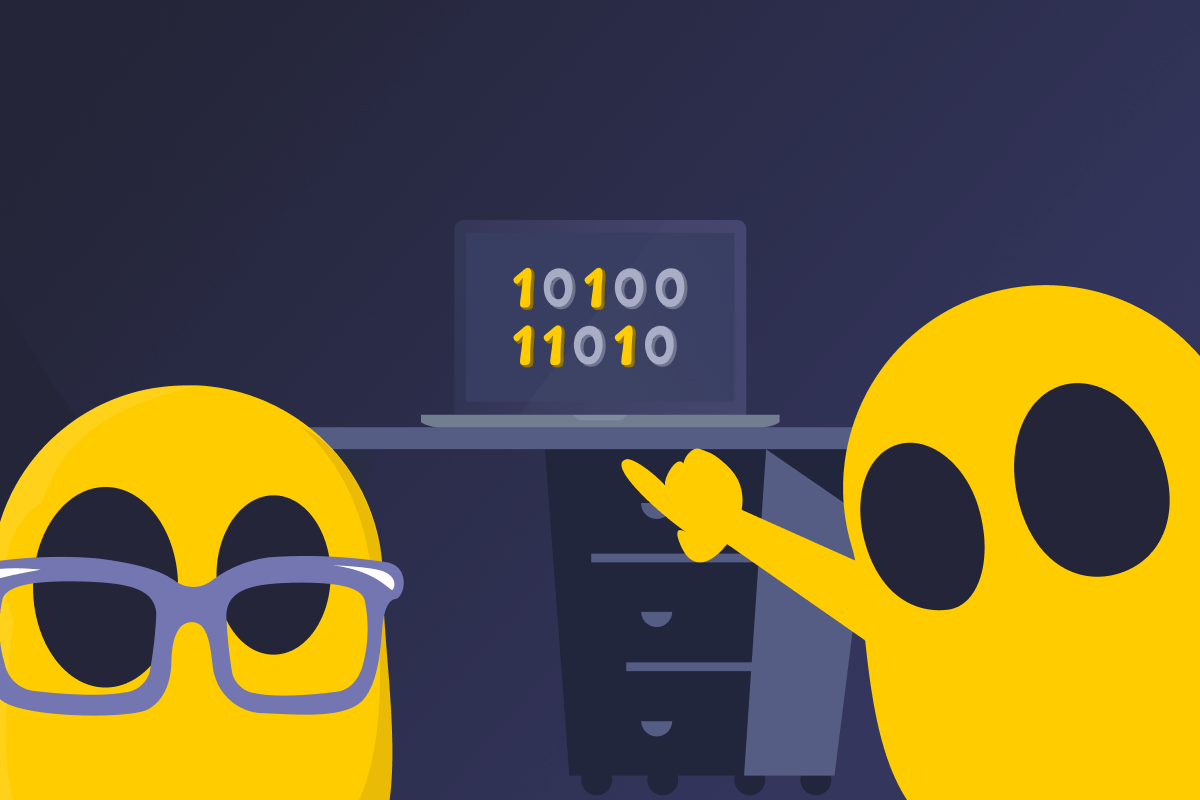Parity Check

Parity Check Definition
A parity check is an error-detection method for digital data. It adds one extra bit (called a parity bit) to the end of the data before it’s sent or stored. That bit helps the system check if the data was altered during transfer or storage.
For example, when you send data over a network or save it to a drive, interference or glitches can change some of the bits. In a parity check, the system counts the number of 1s in the data, including the parity bit. If that number doesn’t match the expected value (either even or odd, depending on the parity type), it flags an error.
How Does a Parity Check Work?
A typical parity check includes the following steps:
- Choosing a parity type: Both sides agree on whether to use even or odd parity before the data is sent.
- Adding a parity bit: The sender counts the number of 1 bits in the data and adds a parity bit to match the agreed rule (even or odd).
- Sending the data: The data and parity bit are sent together over the network.
- Checking the result: The receiver counts all the 1s (including the parity bit) to see if it matches the rule. If not, it flags an error.
Think of it like packing socks. If each sock has a pair, all is well. But if one is missing, you’re left with an odd number (or an odd sock), and you’ll know something’s off. A parity check works the same way. If the number of 1s doesn’t match the expected pattern, the system knows there’s an error.
Odd vs Even Parity
There are two types of parity checks: even parity and odd parity. With even parity, the system checks that the total number of 1 bits (including the parity bit) is even. With odd parity, it checks that the total number of 1s is odd. To make this happen, the system adds a parity bit of either 1 or 0 at the end of the data. There’s no major technical or security differences between the two—it just depends on what the system is set up to expect.
The table below shows how even and odd parity bits are added based on the number of 1s in the original data.
| Data Bits | Parity Type | Number of 1 Bits | Parity Bit | Final Bit Sequence | Total Number of 1 Bits |
| 1010 | Even | 2 | 0 | 10100 | 2 (even) |
| 1100 | Odd | 2 | 1 | 11001 | 3 (odd) |
Benefits of Parity Checks
- Simple to use: Easy to implement with minimal code or resources.
- Fast to run: Doesn’t slow down data transmission or your device’s performance.
- Lightweight design: Adds only one bit to your data, taking minimal space.
- Widely supported: Compatible with most networks and hardware.
- Designed for quick checks: Ideal for spotting basic transmission or storage errors.
Limitations of Parity Checks
- Misses some errors: Can’t detect all issues. If two bits flip, the parity count might still look correct, but the system may not catch it.
- Triggers false alarms: May detect errors even if the data is still usable.
- Can’t fix errors: Only tells you something is wrong, not what or where.
Where Are Parity Checks Used?
Parity checks aren’t the most secure method today, but they’re still used in systems where basic error detection is enough:
- Legacy communication systems: Old dial-up modems used parity checks to detect errors during data transmission.
- Computer memory: Early RAM chips and the original PCI bus included parity bits to catch memory errors.
- RAID storage: Some RAID setups, like RAID 5, use more advanced forms of parity checks along with other methods to help recover lost data.
- Embedded systems: Low-power devices like industrial sensors and microcontrollers use parity for simple error detection.
Read More
FAQ
Parity is used to check whether data has been transmitted correctly. It’s a basic form of error detection used in older computer components, including memory (RAM) and hard drives, as well as older communication protocols.
Say you’re sending data 1010 using even parity. This string has two 1s (which is already even), so the parity bit added would be 0. The full message becomes 10100. When the data transfer is complete, the receiver checks it. If it still counts two 1s, it knows the data likely arrived correctly. If the number of 1s is off, it flags an error.
An even parity check is an error-detection method. It ensures that the total number of 1s in a data block (including the parity bit) is always even. Before sending the data, the system counts the 1s and adds a parity bit (either 0 or 1) to make the total even. When the data reaches the receiver, it counts the 1s again. If the number is still even, the system knows the data wasn’t altered. But if it’s odd, it flags a possible error.
Even and odd parity are two ways to check if data has been tampered with or altered during transfer. With even parity, the system makes sure the total number of 1s in a data block is even. With odd parity, it makes sure the total number of 1s is odd. There’s no major difference between the two; it just depends on what the system is set to expect.
No, a parity check can only catch basic errors, but not every mistake. If one bit changes, it usually detects the problem. But if two or more bits flip in a way that keeps the parity the same (odd or even), the system won’t notice. For example, if the data changed from 1010 to 1001. The total number of 1s hasn’t changed, but the system may not notice, despite the bits being flipped.

 45-Day Money-Back Guarantee
45-Day Money-Back Guarantee